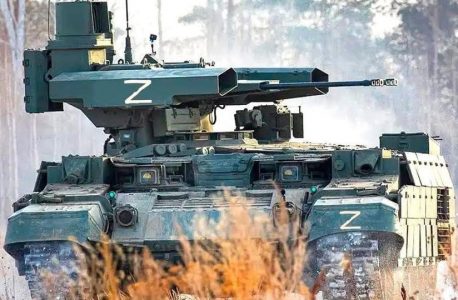By Frank Hilliard for the Council of European Canadians
Anyone familiar with war strategy in the 20th Century will be puzzled by what’s going on in Ukraine. None of the lessons of WWII, or even the postwar era in Israel and Iraq, seem to be holding true. Where are the armoured formations? The bombing campaigns? The rapid advances through open country?
Where indeed. The Russians, after a brief attempt at a coup-de-main, pulled back their forces and started to replay the German attack on Stalingrad. I remember asking at the time, “Why are they attacking the cities in the Donbass when they are the most heavily defended Ukrainian positions?”
The rule is, or was, never attack urban areas when you can go around them. Not any more.
The reason is that man-portable Anti-Tank Missiles, and man portable air defence systems now dominate the battlefield. The former, like the U.S. FGM-148 Javelin, can destroy any main battle tank in the world. The latter can bring down unmanned aerial vehicles, helicopters and supersonic jet fighters. This is why we have seen very little air assault by Russia and no pure tank actions by either side. All this talk about more NATO tanks is pure theater; tanks are sitting ducks.
So what does work? Urban warfare. Fighting in cities, like Mariupol, Soledar, Artemovsk (Bakhmut), Avdeevka and Maryinka is hard, but training, dedication and unit spirit has allowed Russian forces to capture or invest these urban areas in a grinding campaign. Tanks are used as remote artillery, and APCs with rapid fire cannons are used with AT rockets as close in support. Clearing a high rise may take all day, but it gets easier if you can call on instant firepower against any window on any floor.
This brings me to the BMPT Terminator, a tank support armoured fighting vehicle mounting four anti-tank launchers, twin 30 mm cannons and a machine gun. The BMPT can take on any tank, but its twin cannons can also sweep any standing infantry from a defence line because their shells are explosive. In addition the shells have a tracer function so the operator can see exactly what he’s hitting.
Used the way they’re designed, the order should be first artillery spotted by quads, then BMPTs, then infantry, then tanks a mile back being used as mobile artillery. The tanks can always move up once the BMPTs have cleared the opposing MPATM operators, but not before.
So far this tidy arrangement hasn’t been tried by the Russians who seem to be holding hundreds, if not thousands, of armoured fighting vehicles away from the front line. Why are they doing this? I have no idea. I believe a squadron of BMPTs with artillery, tank and infantry support would be unstoppable.
Meanwhile, I’m sure they’re looking forward to the Ukrainians launching an attack without any BMPTs. It should be like a real-life video game.
More from Forbes on the BMPT.

